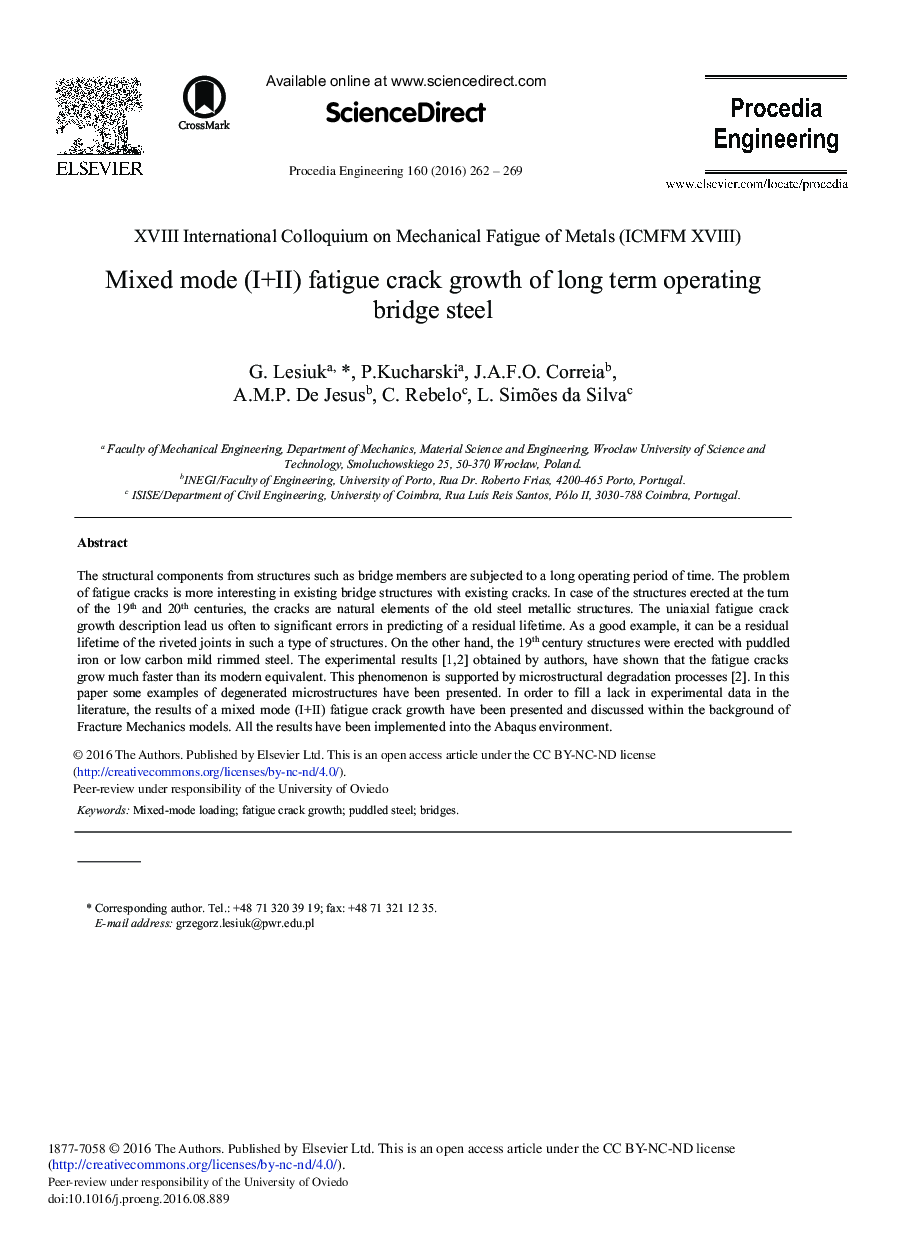| Article ID | Journal | Published Year | Pages | File Type |
|---|---|---|---|---|
| 5029439 | Procedia Engineering | 2016 | 8 Pages |
The structural components from structures such as bridge members are subjected to a long operating period of time. The problem of fatigue cracks is more interesting in existing bridge structures with existing cracks. In case of the structures erected at the turn of the 19th and 20th centuries, the cracks are natural elements of the old steel metallic structures. The uniaxial fatigue crack growth description lead us often to significant errors in predicting of a residual lifetime. As a good example, it can be a residual lifetime of the riveted joints in such a type of structures. On the other hand, the 19th century structures were erected with puddled iron or low carbon mild rimmed steel. The experimental results [1,2] obtained by authors, have shown that the fatigue cracks grow much faster than its modern equivalent. This phenomenon is supported by microstructural degradation processes [2]. In this paper some examples of degenerated microstructures have been presented. In order to fill a lack in experimental data in the literature, the results of a mixed mode (I+II) fatigue crack growth have been presented and discussed within the background of Fracture Mechanics models. All the results have been implemented into the Abaqus environment.
